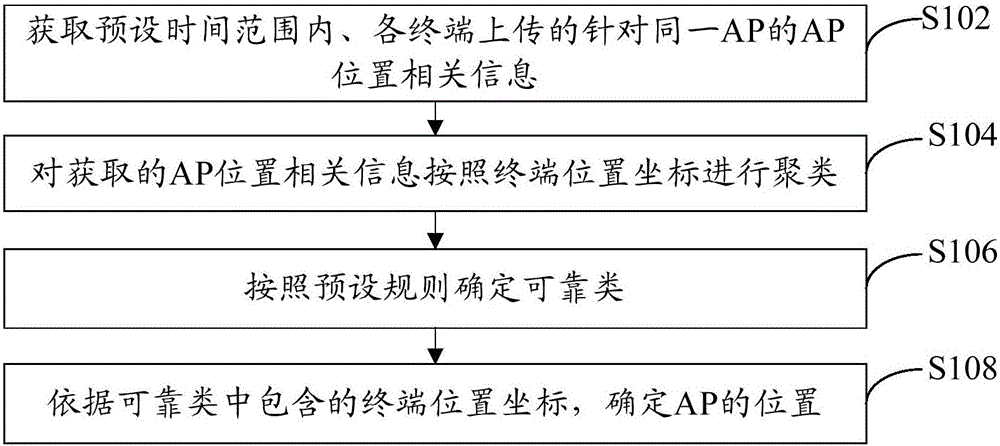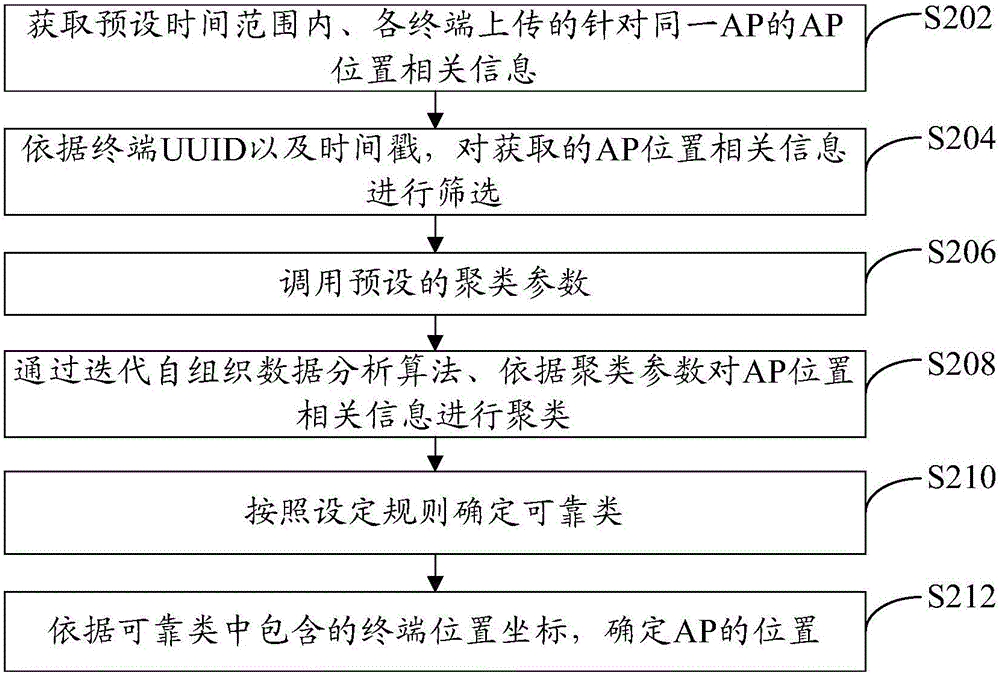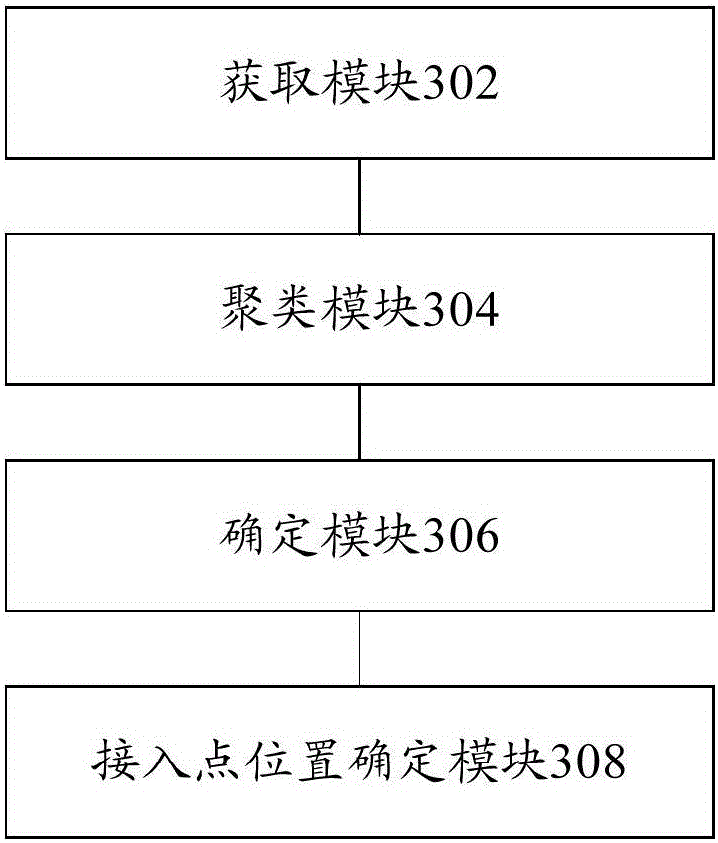Method and device for determining access point position
An access point, terminal location technology, applied in electrical components, wireless communication and other directions, can solve the problem of low accuracy of AP location coordinates, and achieve the effect of improving accuracy, reducing impact and improving accuracy
- Summary
- Abstract
- Description
- Claims
- Application Information
AI Technical Summary
Problems solved by technology
Method used
Image
Examples
Embodiment 1
[0033] refer to figure 1 , shows a flow chart of steps of a method for determining the location of an AP according to Embodiment 1 of the present invention.
[0034] The method for determining the location of the AP in the embodiment of the present invention includes the following steps:
[0035] Step S102: Obtain AP location-related information for the same AP uploaded by each terminal within a preset time range.
[0036] Wherein, the AP location-related information includes: terminal location coordinates. In the specific implementation process, the preset time range can be set by those skilled in the art according to actual needs, for example: set to 60 days, 30 days, 10 days, etc., which is not specifically limited in the embodiment of the present invention.
[0037] The same AP can be connected to multiple terminals, and each terminal can report AP location-related information. Therefore, the same AP in the system corresponds to multiple sets of AP location-related infor...
Embodiment 2
[0051] refer to figure 2 , shows a flow chart of steps of a method for determining the location of an AP according to Embodiment 2 of the present invention.
[0052] The method for determining the location of the AP in the embodiment of the present invention includes the following steps:
[0053] Step S202: Obtain AP location-related information for the same AP uploaded by each terminal within a preset time range.
[0054] Wherein, the AP location-related information includes: terminal location coordinates, time stamp, and terminal UUID (Universally Unique Identifier, Universally Unique Identifier).
[0055] In the AP location-related information, there is a corresponding relationship between the terminal location coordinates, the timestamp, and the terminal UUID.
[0056] Step S204: Filter the acquired AP location-related information according to the terminal UUID and timestamp.
[0057] The acquired AP location-related information is screened in order to delete AP-relate...
Embodiment 3
[0088] refer to image 3 , shows a structural block diagram of an apparatus for determining the location of an AP according to Embodiment 3 of the present invention.
[0089] The apparatus for determining the location of the AP in the embodiment of the present invention includes: an acquisition module 302, configured to acquire the AP location-related information for the same AP uploaded by each terminal within a preset time range; wherein, the AP location-related information includes: terminal location Coordinates; clustering module 304, for clustering the obtained AP location-related information according to terminal location coordinates; determination module 306, for determining reliable classes according to preset rules; access point location determination module 308, for The location coordinates of the terminal contained in the above-mentioned reliable class are used to determine the location of the AP point.
[0090] The device for determining the AP position provided b...
PUM
 Login to View More
Login to View More Abstract
Description
Claims
Application Information
 Login to View More
Login to View More - R&D
- Intellectual Property
- Life Sciences
- Materials
- Tech Scout
- Unparalleled Data Quality
- Higher Quality Content
- 60% Fewer Hallucinations
Browse by: Latest US Patents, China's latest patents, Technical Efficacy Thesaurus, Application Domain, Technology Topic, Popular Technical Reports.
© 2025 PatSnap. All rights reserved.Legal|Privacy policy|Modern Slavery Act Transparency Statement|Sitemap|About US| Contact US: help@patsnap.com



